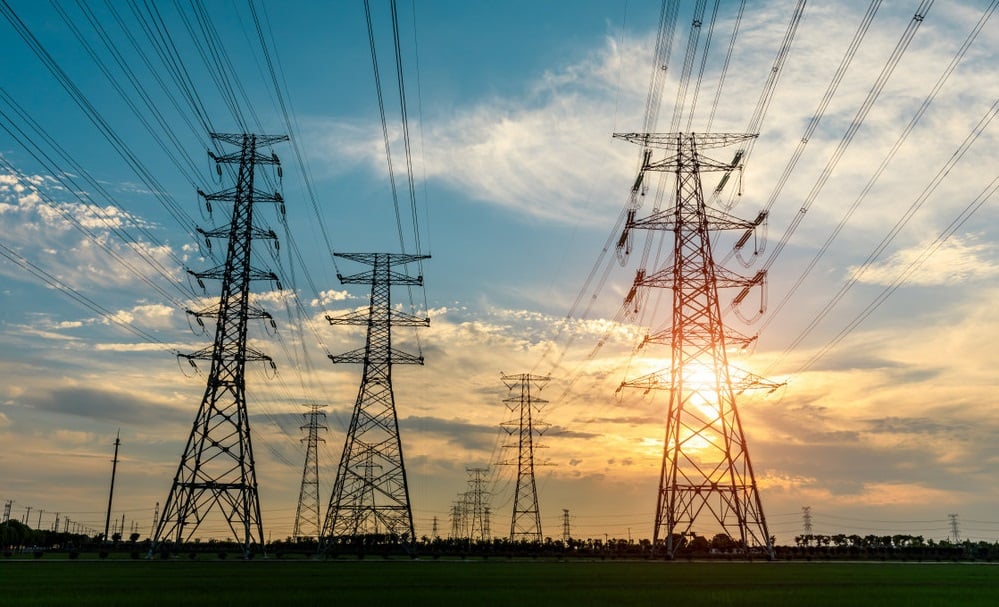
The US has a massive interconnection problem, with more than 1.4TW of clean power sat dormant in its queues. The DOE i2X initiative is seeking to unleash this power and catapult the US closer to its climate targets. But how will it achieve this? Sean Rai-Roche finds out more.
At the start of June, the US Department of Energy (DOE) launched the Innovation e-Xchange (i2X) initiative to ease the country’s enormous interconnection queues, reduce growing wait times and lower grid connection costs.
Unlock unlimited access for 12 whole months of distinctive global analysis
Photovoltaics International is now included.
- Regular insight and analysis of the industry’s biggest developments
- In-depth interviews with the industry’s leading figures
- Unlimited digital access to the PV Tech Power journal catalogue
- Unlimited digital access to the Photovoltaics International journal catalogue
- Access to more than 1,000 technical papers
- Discounts on Solar Media’s portfolio of events, in-person and virtual
Terawatts upon terawatts of bulk power are currently sat in US interconnection queues, left unused and unaccommodated by the US grid even as the country targets 80% of its power mix coming from clean energy by 2030.
i2X aims to address this problem by convening interconnection stakeholders from across the country, bringing them together to brainstorm and deliberate on how to revamp the US’s ailing grid connection system that has seen queues balloon over the past decade.
A utility-scale PV project’s typical duration from connection request to commercial operation increased from roughly 2.1 years for projects built in 2000-2010 to 3.7 years for those built in 2011-2021, Lawrence Berkeley National Laboratory (LBNL) data shows.
A recent LBNL study also found that, among a subset of queues for which data are available, only 23% of the projects seeking connection from 2000 to 2016 were subsequently built and that completion percentages were declining, particularly for wind and solar compared with other resources.
Thus, an initiative like i2X was sorely needed given there is currently more than 14TW of clean energy sat in US interconnection queues, with solar PV making up roughly half of this. And that’s just bulk transmission, not to mention distributed generation systems which have also seen queue times increase.
Speaking at the launch of the i2X initiative, US Secretary of Energy Jennifer Granholm said solving the nation’s interconnection problem was critical to achieving the US’s climate targets and finding a workable solution to the problem could unlock the enormous amount of power currently sat dormant.
Granholm called the initiative a “once-in-a-generation opportunity” to make interconnection bottlenecks a thing of the past, urging stakeholders to sign up to the partnership and give their input. At the time of the launch, 193 organisations had already signed up, with this more than doubling to around 430 a few weeks later. It currently sits at 450, according to the DOE.
PV Tech spoke with the DOE’s solar team and national laboratories involved in the project to further explore how this important initiative will work, what its aims are and how it intends to achieve them.
The i2X initiative in brief
i2X will address the “core issues surrounding grid connection” through its ‘four pillars of support’, which are increasing stakeholder engagement, having better and more transparent data, developing a five-year strategic roadmap and providing technical assistance to partners.
Stakeholders range from grid operators, utilities, state and tribal governments, clean energy developers, energy justice organisations, national research labs and other stakeholders, said the DOE. There is no cut-off date for partners to join, while stakeholders will only be invited to conversations around grid reform that pertain to their particular field.
It has come about through US President Joe Biden’s Bipartisan Infrastructure Law and is backed by US$3 million in funding for its first year. It is intended as a five-year programme but this will depend on Congress funding and other variables, said Michele Boyd, programme manager of the Strategic Analysis and Institutional Support team in the Solar Energy Technologies Office (SETO) at the DOE, essentially SETO’s soft cost department lead.
The DOE will play the role of convener and technical advisor to partners, which Boyd said it had a long and successful history of, while also arranging debates to address each subsection on the US interconnection apparatus. While there has been a “long history of finger pointing” in the sector, Boyd was confident that disparate stakeholders could be convinced to coalesce over an effective strategy.
Data transparency and standardisation
Of the four pillars of its strategy, the DOE has already made good progress on one: stakeholder engagement. Numbers are growing fast. Next, it seeks to tackle the issue of data access and transparency which has hindered the industry for far too long.
Via the initiative, there will be a big push on data transparency and standardisation, said Boyd and Joseph Rand, LBNL’s senior scientific engineering associate on the project, who will be supporting the initiative through technical assistance and developing the strategic roadmap. Rand told PV Tech that collecting key data, for example on grid upgrade costs, and mapping them over the country to compare between regions was currently very difficult due to a lack of data transparency.
“One quick example [of better data sharing] would be the upgrade cost that developers are allocated or assigned in order to interconnect,” says Rand. “It’s really important to understand whether those costs to developers [are] increasing over time.”
Boyd seconded this, noting that while cost allocation for interconnection was clearly in the US Federal Energy Regulatory Commission’s (FERC) jurisdiction, this didn’t mean the regulator was not interested in i2X’s ideas and research on the matter and that the programme would look to support FERC policy on the issue.
Boyd also noted how the interconnection application process can often be “very burdensome” for applicants, even requiring paper forms in some cases, and that i2X would seek to ensure that the “latest technologies are used to make it easier for people to apply”.
Moreover, if data are available, they can often be hard to compare between different regions and Rand said i2X would call for greater data standardisation from RTOs and ISOs, which often compile and structure their data in different ways, making it harder to conduct comparisons. Thus, i2X will also urge these entities to standardise their data sets in order to facilitate greater information exchange.
When asked by PV Tech whether ISOs and RTOs would be willing to share this data more freely, Rand said it was unclear given there were already mandates for them to do so but that rules were not always enforced properly, mooting the idea that FERC may decide to step in with new regulations surrounding data exchange.
Plotting a path forward
Meanwhile, the i2X initiative will also establish a ‘Strategic Roadmap’ for the future that will “inform interconnection process improvements”, which will be led by the LBNL as well as the DOE’s National Renewable Energy Laboratory (NREL) and Pacific Northwest National Laboratory (PNNL).
“We have what’s called a technical work plan, which is a document we’ve been developing over the past several months to outline exactly what we plan to do,” said Rand, adding that nearly a third of the first year’s budget of US$3 million is being provided to LNBL to construct this plan.
And a large part of that plan will be directed at FERC. “We want to be having regular briefings to FERC and ideally engagement from FERC,” he said, noting that because of certain rules around what FERC can share and request from LBNL, the plan needs to predict what analysis will be needed to help the regulator make informed decisions.
And it’s not just LBNL that is trying to push FERC on potential reforms. Paul Cicio, chair of the Electricity Transmission Competition Coalition, told PV Tech that his organisation was “urging FERC to require that all transmission projects that are 100kV or larger be competitively bid, thereby reducing transmission cost by up to 40%”.
“However, the FERC NOPR has rejected competition, despite the fact that competition is a proven anti-inflation policy,” Cicio said, adding a Brattle Group study revealed that, when there is no competitive process, the monopoly incumbent utility’s costs come in 36% higher than projected costs on average.
In April, FERC issued a Notice of Proposed Rulemaking (NOPR) that aimed to address transmission grid planning and cost allocation, including conducting regional transmission planning on a sufficiently long-term, forward-looking basis to meet transmission needs driven by changes in the resource mix and demand.
It also included rules that “the [interconnection] analyses needs to happen in parallel rather than sequentially” to applications, noted Boyd, who added that the DOE was “really interested in helping people to figure out how to do that and help develop the tools to make that simpler, faster and easier”.
Boyd, however, was more sympathetic to the regulator than Cicio, noting how its mandate covers the entire US energy system and that it released the recent NOPR to address interconnection problems, albeit with some key areas – i.e. cost allocation – unaddressed.
Instead, she chooses to focus on “what research needs to happen and what can we do today?”. She believes the DOE has assembled the right team to address this mammoth challenge, with many of the experts on the initiative “working on interconnection for decades” and having an extensive knowledge of the issues and barriers at play.
The DOE released more details about i2X at the RE+ industry event in Anaheim, California, last month. The first phase of the programme, set to run until 2023, is related to partner engagement and designing its five-year roadmap for interconnection reform.
Phase two, which will start next year and run until 2028, will then look to implement the actions identified in the roadmap and make the US’s grid system more adaptable and easier to connect to.
i2X holds the potential to not only unlock the vast amount of dormant power in the US but also pave the way for the more efficient connection of future projects. It’s not going to be an easy task and will likely be fraught with competing agendas from disparate stakeholders. But it is vital for the future of US clean energy. Doing nothing is not an option.







